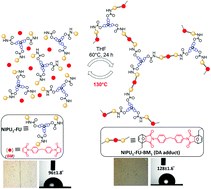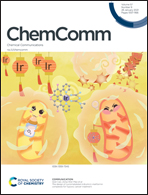Self-healable hydrophobic polymer material having urethane linkages via a non-isocyanate route and dynamic Diels–Alder ‘click’ reaction†
Abstract
Conventional synthesis of polyurethane (PU) often involves the use of inherently toxic and overly moisture-sensitive isocyanates. Herein, we report the preparation of a self-healable hydrophobic polymer network having urethane linkages via a facile non-isocyanate route based on carbonylimidazole-amine reaction and dynamic Diels–Alder (DA) ‘click’ reaction based on furan–maleimide cycloaddition. This isocyanate-free DA ‘clicked’ polymer material showed excellent self-healing and hydrophobic characteristics.



 Please wait while we load your content...
Please wait while we load your content...